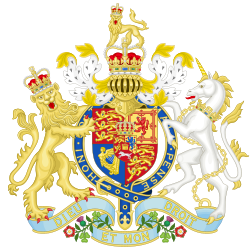Background
| Birmingham Improvement Act 1769 | |
|---|---|
| Act of Parliament | |
 | |
| Long title | An Act for laying open and widening certain Ways and Passages within the Town of Birmingham, and for cleansing and lighting the Streets, Lanes, Ways, and Passages there, and for removing and preventing Nuisances and Obstructions therein. |
| Citation | 9 Geo. 3. c. 83 |
| Territorial extent | Great Britain |
| Dates | |
| Royal assent | 1 May 1769 |
| Commencement | 8 November 1768 [a] |
| Repealed | 20 May 1812 |
| Other legislation | |
| Amended by | |
| Repealed by | Birmingham Improvement Act 1812 |
Status: Repealed | |
| Text of statute as originally enacted | |
Unlike many large towns, Birmingham was not incorporated as a borough with a municipal corporation, and so until 1769, the only institutions of local government were the parish vestry and manoral institutions such as the court leet. By the mid-18th century, it was clear that these institutions were inadequate for the needs of the growing town, and that a new local government body was needed. The most acceptable proposal, first made in 1765, was for a dedicated body of commissioners to levy a rate to carry out certain precisely defined functions, such as ensuring the efficient working of the markets, and the provision of street lighting. An act of Parliament was passed to create this body, the Birmingham Improvement Act 1769 (9 Geo. 3. c. 83). [1] [2]
| Birmingham Improvement Act 1772 | |
|---|---|
| Act of Parliament | |
 | |
| Long title | An Act to amend an Act, passed in the Ninth Year of His present Majesty, intituled, "An Act for laying open and widening certain Ways and Passages within the Town of Birmingham, and for cleaning and lighting the Streets, Lanes, Ways, and Passages there; and for removing and preventing Nuisances and Obstructions therein; and for widening certain other Streets and Places; for establishing a Nightly Watch; and for regulating Carts and Carmen employed in the said Town." |
| Citation | 13 Geo. 3. c. 36 |
| Territorial extent | Great Britain |
| Dates | |
| Royal assent | 7 April 1773 |
| Commencement | 26 November 1772 [a] |
| Other legislation | |
| Amends | Birmingham Improvement Act 1769 |
| Amended by | Birmingham Improvement Act 1801 |
| Repealed by | Birmingham Improvement Act 1812 |
| Relates to | 20 May 1812 |
Status: Repealed | |
| Text of statute as originally enacted | |
| Birmingham Improvement Act 1801 | |
|---|---|
| Act of Parliament | |
 | |
| Long title | An Act to alter and enlarge the Powers of Two Acts, passed in the Ninth and Thirteenth Years of the Reign of His present Majesty, for laying open and widening certain Ways, Passages, Streets and Places, within the Town of Birmingham; and for cleansing and lighting the Streets, Lanes, Ways and Passages there, and for other Purposes in the said Acts mentioned; and also for regulating Hackney Coaches and Chairs, and the Drivers of all Carriages, in the said Town; for laying open and widening certain other Streets and Places there; for further regulating the Police of the said Town, and the Manner of laying out and paving new Streets there, and for other purposes. |
| Citation | 41 Geo. 3. (U.K.) c. xxxix |
| Territorial extent | United Kingdom |
| Dates | |
| Royal assent | 21 May 1801 |
| Commencement | 21 May 1801 [b] |
| Repealed | 20 May 1812 |
| Other legislation | |
| Amends | |
| Repealed by | Birmingham Improvement Act 1812 |
Status: Repealed | |
| Birmingham Improvement Act 1812 | |
|---|---|
| Act of Parliament | |
 | |
| Long title | An Act for better paving, lighting, watching, cleansing and otherwise improving the Town of Birmingham, in the County of Warwick; and for regulating the Police and Markets of the said Town. |
| Citation | 52 Geo. 3. c. cxiii |
| Territorial extent | United Kingdom |
| Dates | |
| Royal assent | 20 May 1812 |
| Commencement | 20 May 1812 [b] |
| Repealed | 23 May 1828 |
| Other legislation | |
| Repeals/revokes |
|
| Repealed by | Birmingham Improvement Act 1828 |
Status: Repealed | |
| Text of statute as originally enacted | |
| Birmingham Improvement Act 1828 | |
|---|---|
| Act of Parliament | |
 | |
| Long title | An Act for better paving, lighting, watching, cleansing, and otherwise improving the Town of Birmingham in the County of Warwick, and for regulating the Police and Markets of the said Town. |
| Citation | 9 Geo. 4. c. liv |
| Territorial extent | United Kingdom |
| Dates | |
| Royal assent | 23 May 1828 |
| Commencement | 23 May 1828 [b] |
| Repealed | 1 January 1852 |
| Other legislation | |
| Repeals/revokes | Birmingham Improvement Act 1812 |
| Repealed by | Birmingham Improvement Act 1851 |
Status: Repealed | |
| Text of statute as originally enacted | |
The powers of the Street Commissioners were gradually increased by further acts of Parliament, the Birmingham Improvement Act 1772 (13 Geo. 3. c. 36), Birmingham Improvement Act 1801 (41 Geo. 3. (U.K.) c. xxxix), Birmingham Improvement Act 1812 (52 Geo. 3. c. cxiii) and Birmingham Improvement Act 1828 (9 Geo. 4. c. liv). [2]



